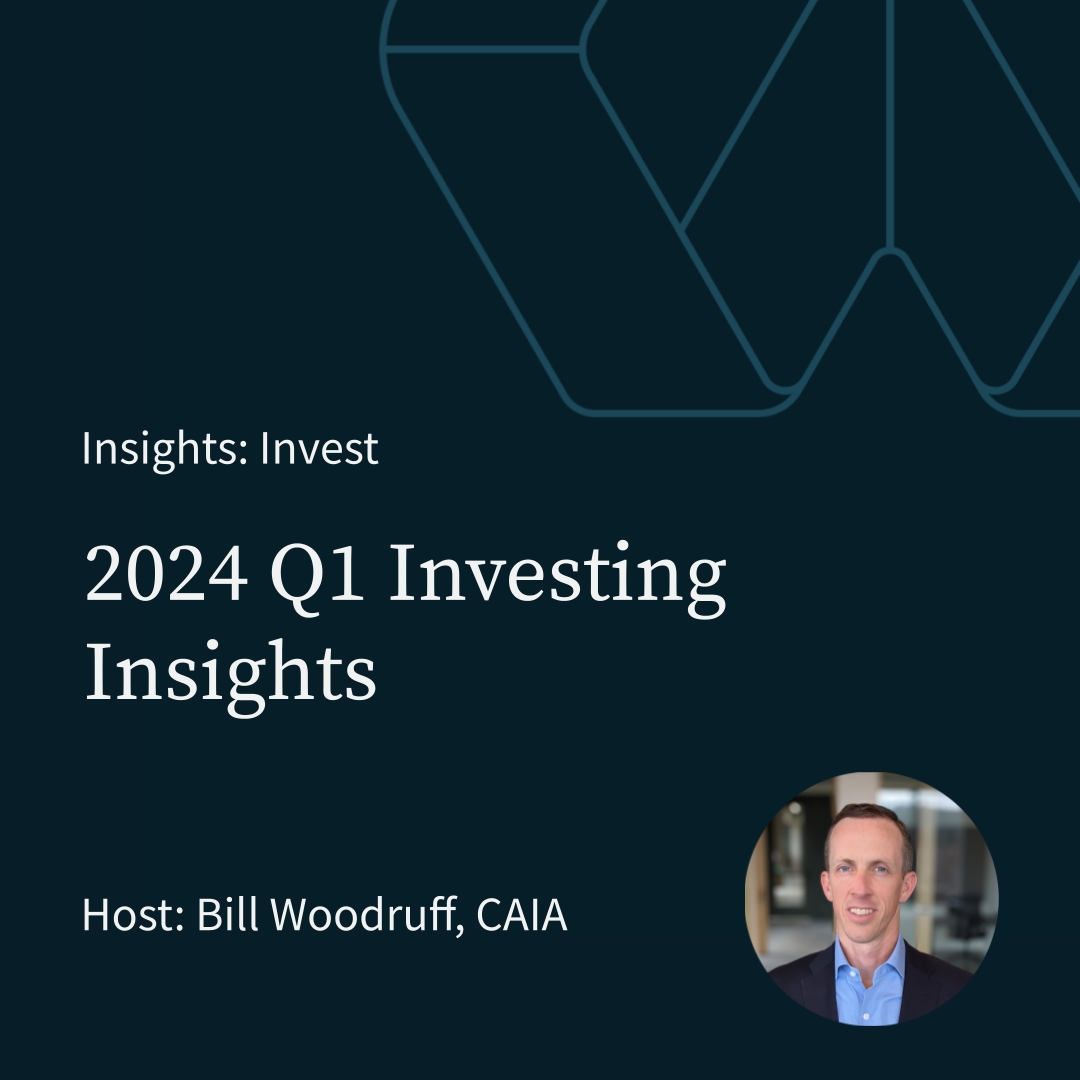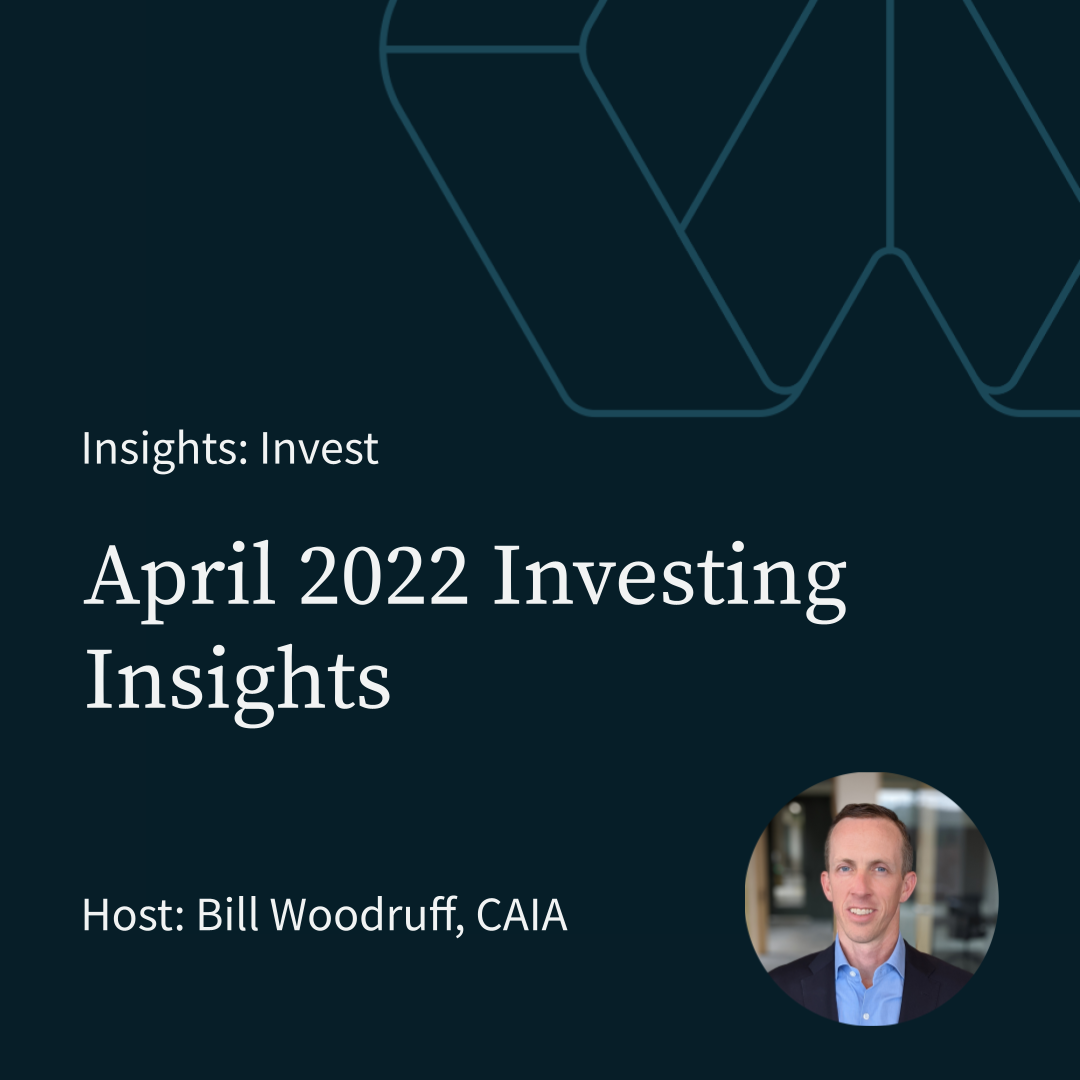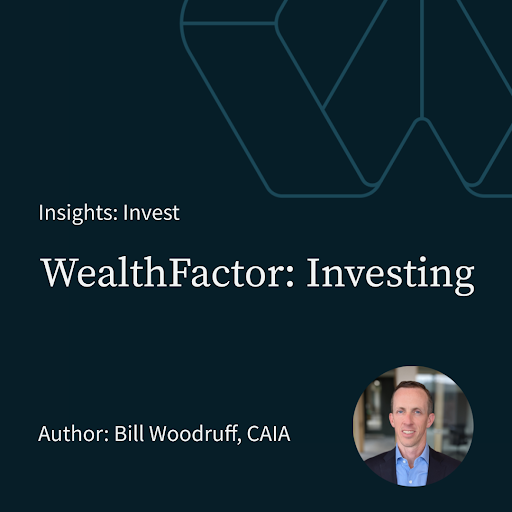WealthFactor Review & Update: November 2020
Transcript:
SUMMARY KEYWORDS
markets, corporate profits, sectors, factor, publicly traded, expectation, wealth, graph, relative, portfolio, financial markets, statements, significant, spend, November, enhance, call, investing, plan, generally
00:00
Hi, good afternoon. Welcome to the November 2020, wealth factor, review and update. My name is Bill Woodruff. I'm the founder and I'm responsible for the investment activity at WealthFactor. Before I get too far in a few words for compliance purposes, this call is for informational purposes only, and may be recorded statements made during this call or the opinions of the speaker and are subject to risk and uncertainties some of which are significant in nature. And by their very scope beyond the control of wealth factor, there can be no assurance that such statements will prove to be accurate, and actual results and future events could differ in a material way from set statements. Historical results are not necessarily indicative of future performance. In terms of a quick introduction, well factor was founded in 2017. I have been actively involved in investing for over 20 years now and have a diverse background across the investment industry, both involved in in local boutique investment organizations as well as the publicly traded asset manager fortress Investment Group.
01:30
Well factor is a Lake Oswego based digital wealth manager, we offer personalized plan based investment advice and solutions. We provide managed custom portfolios comprised primarily of individual securities, including stocks and or bonds. Accounts are held in each client's name at an independent third party custodian. And we charge a point three 5% asset based fee for services. In terms of a quick update. since our last monthly call, our team has grown and I'd like to welcome and announce the addition of Russ McAlmond. Russ is a has been involved in financial planning and investing for over 30 years, and has a diverse background
02:30
and, and a significant number of credentials. Most notably, he's a certified financial planner, and he'll be heading up and responsible for ensuring that each one of our wealth factor planning clients receives the highest quality financial plan service possible.
02:50
The second person I'd like to introduce and announce the joining to the wealth factor team is Tyson Edwards, Tyson Tyson's been brought in to enhance and accelerate our aggressive technology initiatives as we seek to enhance and simplify the user experience, integrate all elements of our business and continue to enhance our automations. So jumping into financial markets. So today, we're going to go through and kind of focus on November per our standard process, though, we don't spend a whole ton of time getting really focused on details on an intra month basis. It's our belief that a lot of the movements on an intraday daily, monthly or even quarterly basis tend to be more noise than useful information. And consistent with that philosophy. We don't we won't be spending and emphasizing a lot of this sort of activity that we see. Instead looking at and trying to provide a proper context to think about our investing in general and, and help maintain and preparedness to avoid some of the potential pitfalls and challenges that many investors end up succumbing to, because of the practical challenges associated with publicly traded financial markets. So today, we're gonna we can look back over 2020 and see that we had multiple reminders that we shouldn't try to time markets and markets in their V shaped recovery and, and the acceleration of very strong performance for 2020 as a whole is a great example of why one should not look at a macro environment or the or take a view on the direction and markets and think that there that's going to be a useful view and information that they should act on. So we're going to we're going to spend a little time looking at an asset
05:00
answering the question why why have markets moved higher? You know, in simplifying with, we have an election that's behind us, and investors and markets like certainty. And so we, you know, we're on a path forward and a certain path forward is better than unknown.
05:20
Secondly, we're seeing, you know, fairly good expectation for a return soon for an upward trajectory for corporate profits. And, and, you know, as we look at what markets are, it's really a representation of the future prices are really a representation of the future expectation for corporate profits into the future. And then, you know, evaluations, thanks to the recent run up in price have kind of re entered a historically high levels. And, as I've said, and these calls in the past, valuations don't tend to be all that useful from a predictive perspective. But I think it's always important to be mindful about where valuations are relative to historical norms and averages. So with this graph, here, we've got a, we're looking at the annual returns, going back about 40 years, and with the bar chart, and then the red.is, the low lowest point in each year. And I think this is an excellent graph to look at and this calendar year where we had our significant Coronavirus link decline in the spring. And now we find ourselves for the end of November, up 4% year to date. So reinforcing the point that I just made in regards to it. It's really dangerous, and probably not useful to try to time and predict markets. If there were ever a year where the if you were to try to feel your way through investment decision making, you would feel like you didn't want to have investment be invested this year. And practically speaking, exiting at any point was probably a it was very clearly given how how much we've seen increases in equity prices, generally speaking, that would be a decision that would be suboptimal.
07:24
I don't often spend a ton of time thinking about or talking about corporate profits, but it's worth thinking about. And looking at them conceptually. It's a lot of people say, Well, why don't understand why markets go up? And what's driving markets higher? And in the short run? The answer to that is very much sentiment driven. What is the market think in the long run, though, the there is absolutely a relationship between the growth of aggregate corporate profits, and the direction of the markets. And so we can see this graph going back to the late 80s. And we've see a steady, generally steady, obviously there are periods of retraction, but generally fairly steady increases in corporate profits. And with the blue lines are consensus analyst estimates, which if you're going to predict anything, including corporate profits, you should likely do so often as they're just as difficult to predict as anything else in publicly traded financial markets or economies. However, it is probably a reasonable reflection of the market sentiment relative to future corporate profits. And so we can see the decline expected decline. That's Coronavirus linked, but we can see that very quickly. There is an expectation that profits will be higher than they were prior to the Coronavirus. And so this graph helps lay a conceptual foundation for why we're seeing markets go up. It's largely the expectation that the Coronavirus won't have a meaningful long term effect on corporate profits. Another thing that I think is worth taking a look at is thinking about the market relative to sectors. So we're seeing a year where the s&p through the end of November is up approximately 12%. But that's not and as it almost always is normally distributed across sectors. And so we see a variety of sectors that are far more reliant on large groups or in person interaction, you know, struggling this year and that makes sense relative to the way in which we've been forced to do business in post pandemic and Coronavirus. And we're seeing online
10:00
retail and tech leading the way from a sector perspective, again consistent with the current environment. So I consistently whether it's on an individual security basis, or sector basis, as well as aggregate overall market do not believe one should look at this and try to identify patterns, or modify the way in which their portfolio is positioned and believe that one should instead think about the dynamic of the composition of a portfolio more from a risk efficiency perspective and build a diverse portfolio from a sectors standpoint. That concludes the prepared comments for today. As always, we welcome the opportunity to answer questions or be of potential assistance.
Transcript:
SUMMARY KEYWORDS
markets, corporate profits, sectors, factor, publicly traded, expectation, wealth, graph, relative, portfolio, financial markets, statements, significant, spend, November, enhance, call, investing, plan, generally
00:00
Hi, good afternoon. Welcome to the November 2020, wealth factor, review and update. My name is Bill Woodruff. I'm the founder and I'm responsible for the investment activity at WealthFactor. Before I get too far in a few words for compliance purposes, this call is for informational purposes only, and may be recorded statements made during this call or the opinions of the speaker and are subject to risk and uncertainties some of which are significant in nature. And by their very scope beyond the control of wealth factor, there can be no assurance that such statements will prove to be accurate, and actual results and future events could differ in a material way from set statements. Historical results are not necessarily indicative of future performance. In terms of a quick introduction, well factor was founded in 2017. I have been actively involved in investing for over 20 years now and have a diverse background across the investment industry, both involved in in local boutique investment organizations as well as the publicly traded asset manager fortress Investment Group.
01:30
Well factor is a Lake Oswego based digital wealth manager, we offer personalized plan based investment advice and solutions. We provide managed custom portfolios comprised primarily of individual securities, including stocks and or bonds. Accounts are held in each client's name at an independent third party custodian. And we charge a point three 5% asset based fee for services. In terms of a quick update. since our last monthly call, our team has grown and I'd like to welcome and announce the addition of Russ McAlmond. Russ is a has been involved in financial planning and investing for over 30 years, and has a diverse background
02:30
and, and a significant number of credentials. Most notably, he's a certified financial planner, and he'll be heading up and responsible for ensuring that each one of our wealth factor planning clients receives the highest quality financial plan service possible.
02:50
The second person I'd like to introduce and announce the joining to the wealth factor team is Tyson Edwards, Tyson Tyson's been brought in to enhance and accelerate our aggressive technology initiatives as we seek to enhance and simplify the user experience, integrate all elements of our business and continue to enhance our automations. So jumping into financial markets. So today, we're going to go through and kind of focus on November per our standard process, though, we don't spend a whole ton of time getting really focused on details on an intra month basis. It's our belief that a lot of the movements on an intraday daily, monthly or even quarterly basis tend to be more noise than useful information. And consistent with that philosophy. We don't we won't be spending and emphasizing a lot of this sort of activity that we see. Instead looking at and trying to provide a proper context to think about our investing in general and, and help maintain and preparedness to avoid some of the potential pitfalls and challenges that many investors end up succumbing to, because of the practical challenges associated with publicly traded financial markets. So today, we're gonna we can look back over 2020 and see that we had multiple reminders that we shouldn't try to time markets and markets in their V shaped recovery and, and the acceleration of very strong performance for 2020 as a whole is a great example of why one should not look at a macro environment or the or take a view on the direction and markets and think that there that's going to be a useful view and information that they should act on. So we're going to we're going to spend a little time looking at an asset
05:00
answering the question why why have markets moved higher? You know, in simplifying with, we have an election that's behind us, and investors and markets like certainty. And so we, you know, we're on a path forward and a certain path forward is better than unknown.
05:20
Secondly, we're seeing, you know, fairly good expectation for a return soon for an upward trajectory for corporate profits. And, and, you know, as we look at what markets are, it's really a representation of the future prices are really a representation of the future expectation for corporate profits into the future. And then, you know, evaluations, thanks to the recent run up in price have kind of re entered a historically high levels. And, as I've said, and these calls in the past, valuations don't tend to be all that useful from a predictive perspective. But I think it's always important to be mindful about where valuations are relative to historical norms and averages. So with this graph, here, we've got a, we're looking at the annual returns, going back about 40 years, and with the bar chart, and then the red.is, the low lowest point in each year. And I think this is an excellent graph to look at and this calendar year where we had our significant Coronavirus link decline in the spring. And now we find ourselves for the end of November, up 4% year to date. So reinforcing the point that I just made in regards to it. It's really dangerous, and probably not useful to try to time and predict markets. If there were ever a year where the if you were to try to feel your way through investment decision making, you would feel like you didn't want to have investment be invested this year. And practically speaking, exiting at any point was probably a it was very clearly given how how much we've seen increases in equity prices, generally speaking, that would be a decision that would be suboptimal.
07:24
I don't often spend a ton of time thinking about or talking about corporate profits, but it's worth thinking about. And looking at them conceptually. It's a lot of people say, Well, why don't understand why markets go up? And what's driving markets higher? And in the short run? The answer to that is very much sentiment driven. What is the market think in the long run, though, the there is absolutely a relationship between the growth of aggregate corporate profits, and the direction of the markets. And so we can see this graph going back to the late 80s. And we've see a steady, generally steady, obviously there are periods of retraction, but generally fairly steady increases in corporate profits. And with the blue lines are consensus analyst estimates, which if you're going to predict anything, including corporate profits, you should likely do so often as they're just as difficult to predict as anything else in publicly traded financial markets or economies. However, it is probably a reasonable reflection of the market sentiment relative to future corporate profits. And so we can see the decline expected decline. That's Coronavirus linked, but we can see that very quickly. There is an expectation that profits will be higher than they were prior to the Coronavirus. And so this graph helps lay a conceptual foundation for why we're seeing markets go up. It's largely the expectation that the Coronavirus won't have a meaningful long term effect on corporate profits. Another thing that I think is worth taking a look at is thinking about the market relative to sectors. So we're seeing a year where the s&p through the end of November is up approximately 12%. But that's not and as it almost always is normally distributed across sectors. And so we see a variety of sectors that are far more reliant on large groups or in person interaction, you know, struggling this year and that makes sense relative to the way in which we've been forced to do business in post pandemic and Coronavirus. And we're seeing online
10:00
retail and tech leading the way from a sector perspective, again consistent with the current environment. So I consistently whether it's on an individual security basis, or sector basis, as well as aggregate overall market do not believe one should look at this and try to identify patterns, or modify the way in which their portfolio is positioned and believe that one should instead think about the dynamic of the composition of a portfolio more from a risk efficiency perspective and build a diverse portfolio from a sectors standpoint. That concludes the prepared comments for today. As always, we welcome the opportunity to answer questions or be of potential assistance.
WealthFactor, LLC has withdrawn its registration as an investment advisor and does not currently offer any investment advisory services. All information is being shared for educational purposes only and should not be construed as an offer to buy or sell any security or service of any kind. Please consult with the proper professional services provider prior to acting on any information contained within this site.
© 2024 WealthFactor All Rights Reserved.










